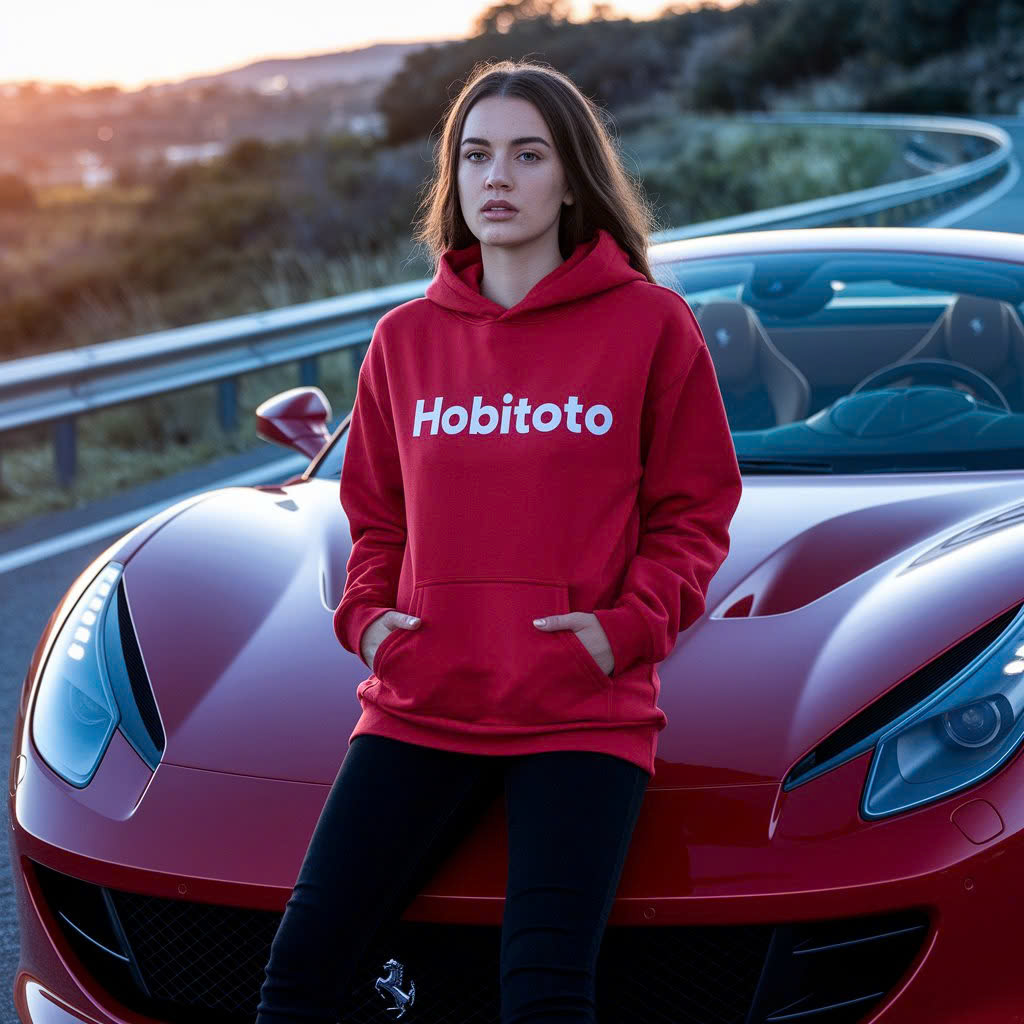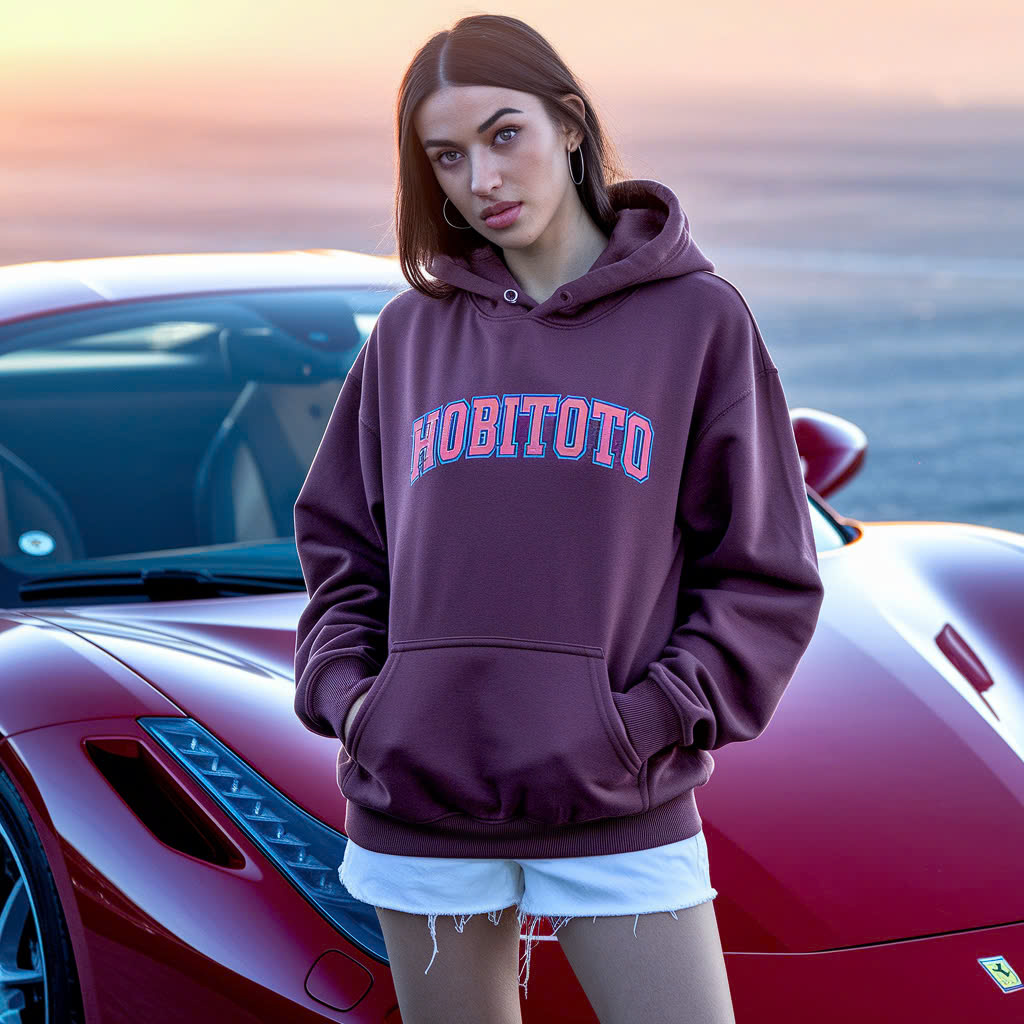The hoodie is more than just a casual garment—it is a cultural phenomenon that has evolved through decades of innovation, artistic expression, and social change. Originally designed for practicality and warmth, the hoodie has transformed into a symbol of individuality, rebellion, and even technological progress. This article explores the multifaceted journey of the hoodie, tracing its evolution from humble workwear to a global fashion staple. It examines its historical roots, design innovations, cultural and economic impact, sustainability challenges, and emerging trends that promise to redefine what a hoodie can be in the future.
The origins of the hoodie can be traced back to the early 20th century when workers and athletes needed reliable clothing to protect themselves against harsh weather conditions. In its earliest forms, the hoodie was a simple, utilitarian sweatshirt with an attached hood designed to keep the head and neck warm. Made from heavy cotton and durable fabric blends, these garments were prized for their functionality. Laborers working outdoors and athletes in cold environments quickly recognized the value of a hooded design that could shield them from wind and rain. In these early days, style was secondary to survival, and the hoodie’s basic design fulfilled its purpose effectively.
As industrialization accelerated and more people began to work in challenging environments, the hoodie established itself as an essential piece of clothing. During the mid-20th century, its practicality was further validated during times of conflict and economic hardship. Soldiers and pilots adopted hooded sweatshirts as part of their standard attire, valuing the extra layer of protection provided by the hood. This period laid the groundwork for the hoodie’s enduring legacy; what began as a purely functional garment eventually permeated everyday life as its reliability and comfort became universally appreciated.
The social and cultural transformation that occurred in the 1960s and 1970s marked a turning point for the hoodie. As young people in urban centers began to embrace countercultural movements, the hoodie emerged as a symbol of rebellion and self-expression. In the crowded streets and skate parks of major cities, it became a uniform for those who rejected mainstream societal norms. The simple, unadorned design provided an ideal canvas for customization, allowing wearers to modify their hoodies with slogans, graphics, and personal touches. This act of personalization was a form of silent protest, a way for individuals to declare their identity without uttering a word.
Artists, musicians, and creatives quickly recognized the potential of the hoodie as both a practical garment and a medium for artistic expression. In the vibrant music scenes of the era—whether in underground clubs or on television screens—the hoodie was embraced as part of the rebellious aesthetic. It came to symbolize a defiant stance against conformity, and its association with subcultures such as hip-hop, punk, and skateboarding only further solidified its image as a garment for the free-spirited. By the late 20th century, the hoodie was no longer merely a tool for warmth; it had become an emblem of urban cool and creative autonomy.
Design evolution has been at the heart of the hoodie’s enduring appeal. Early versions were basic—a loose fit, simple drawstring, and a single front pocket often defined their silhouette. However, as the garment grew in popularity, designers began to experiment with new materials, cuts, and features. Modern hoodies now come in a variety of styles that cater to diverse tastes and functional needs. Innovations such as zippered fronts, adjustable cuffs, contoured hoods, and additional pockets have enhanced both the aesthetic and practicality of the hoodie. Advances in textile technology have led to the incorporation of performance fabrics—materials that wick moisture, offer stretch, and regulate temperature without adding bulk. These innovations allow the hoodie to function effectively in a range of environments, whether as part of an athletic ensemble or as everyday casual wear.
Digital printing and embroidery have revolutionized how hoodies are personalized. With the advent of advanced printing techniques, it has become possible to produce intricate graphics and custom designs on hoodies with remarkable clarity. Limited-edition releases and collaborations between fashion brands and independent artists have turned hoodies into collectible pieces, each with its own unique story. The rise of on-demand manufacturing has further democratized the process, enabling consumers to design their own hoodies and have them produced according to their specifications. This level of customization has not only bolstered the hoodie’s appeal but also allowed it to serve as a direct expression of individual identity.
The cultural impact of the hoodie extends far beyond its design. In popular culture, the hoodie has been immortalized in movies, music videos, and art, where it often symbolizes themes of defiance, comfort, and authenticity. Iconic figures in music and film have frequently donned hoodies, using them as part of their personal brand to communicate messages of nonconformity and resilience. For many, the act of “hooding up” is more than a fashion choice—it is a way to create a sense of personal space and anonymity in an increasingly connected world. This dual function of offering both physical warmth and a degree of privacy has resonated deeply with urban dwellers who navigate the complexities of modern life.
Political and social movements have also harnessed the power of the hoodie as a symbol of solidarity and resistance. In protest rallies and demonstrations around the world, hoodies have been worn as a statement of defiance against oppression. The garment’s ability to obscure the face while still conveying a powerful message makes it an ideal tool for activists who wish to participate in collective actions while maintaining a degree of personal security. The hoodie, in this context, has become a unifying emblem—a visual shorthand for the desire to challenge the status quo and advocate for change.
Economically, the hoodie occupies a significant niche in the global apparel market. Its mass appeal spans a wide demographic—from teenagers and college students to working professionals and even celebrities. Fast fashion retailers produce millions of hoodies each year, making them accessible to a broad range of consumers. At the same time, high-end designers and luxury brands release exclusive hoodie collections that command premium prices and capture the attention of fashion enthusiasts worldwide. This dynamic creates a market where the hoodie is both a commodity and a statement piece, balancing affordability with exclusivity.
The global supply chain that produces hoodies is extensive and complex. Manufacturing hubs in Asia, Eastern Europe, and Latin America leverage economies of scale to produce these garments at competitive prices. However, the environmental and ethical implications of mass production have sparked increasing scrutiny. Concerns over water usage, chemical waste, and labor practices have led many consumers and advocacy groups to demand greater transparency and accountability from fashion brands. In response, a growing number of companies are committing to sustainable practices and ethical production methods, ensuring that hoodies are produced in a manner that respects both the environment and human rights.
Sustainability has become a central focus in the modern apparel industry, and the hoodie is no exception. Traditional textile manufacturing methods can be resource-intensive, involving significant water consumption and energy use, as well as the generation of waste and chemical runoff. Recognizing these challenges, many brands are turning to eco-friendly materials such as organic cotton and recycled polyester to reduce the environmental impact of their products. Innovations in dyeing and finishing processes, such as waterless dyeing and digital printing, further contribute to a reduction in resource consumption and waste. These initiatives are not only beneficial for the planet but also resonate with consumers who prioritize ethical and sustainable fashion.
Ethical labor practices are another critical consideration. With much of the world’s garment production taking place in regions where working conditions may be less than ideal, ensuring fair wages and safe working environments is a major challenge for the industry. In response, brands are increasingly seeking certifications and engaging in third-party audits to guarantee that their products are made under humane conditions. By adopting more transparent supply chains and committing to ethical production, companies are not only meeting consumer demand but also setting a higher standard for the global fashion industry.
The integration of technology into hoodie design is paving the way for a future where functionality and innovation converge seamlessly with style. Researchers and designers are exploring the potential of “smart” hoodies—garments embedded with sensors that can monitor physiological parameters such as heart rate, body temperature, and stress levels. These smart textiles have the potential to transform the hoodie into a wearable health device that offers real-time feedback and personalized comfort. Imagine a hoodie that adjusts its insulation based on your body temperature or alerts you to dehydration during a workout. While such technologies are still emerging, they represent the next frontier in wearable fashion and underscore the limitless possibilities of the hoodie.
Digital customization is another exciting development that is reshaping the way consumers interact with the hoodie. Online platforms now allow users to create personalized designs by selecting colors, fabrics, and graphics that reflect their individual style. This on-demand approach not only reduces waste by producing items only when ordered but also empowers consumers to become co-creators in the fashion process. The democratization of design means that the hoodie of the future will likely be a blend of mass production and bespoke craftsmanship, offering a unique combination of affordability and personalization.
Social media has played a pivotal role in amplifying the global influence of the hoodie. Platforms such as Instagram, TikTok, and Pinterest have enabled fashion trends to spread rapidly across borders, uniting communities around shared aesthetics and lifestyles. Influencers and everyday users alike share their unique takes on hoodie fashion, contributing to a vibrant digital dialogue that continually reshapes consumer perceptions. This interconnected digital landscape has not only bolstered the hoodie’s status as a cultural icon but also opened up new avenues for marketing and brand engagement.
Across different regions of the world, the hoodie serves as a unifying symbol that transcends cultural and linguistic boundaries. Local designers have reinterpreted the classic hoodie by incorporating indigenous patterns, traditional fabrics, and culturally significant motifs. This fusion of global trends with local heritage enriches the aesthetic appeal of the hoodie and reinforces its role as a bridge between diverse communities. Whether worn as a fashion statement in urban centers or as a functional garment in more traditional settings, the hoodie resonates with people from all walks of life.
In the realms of art, music, and social activism, the hoodie continues to inspire. Many renowned musicians and visual artists have embraced the hoodie as part of their signature style, using it to convey messages of authenticity, defiance, and creative freedom. Its appearance in music videos, films, and public demonstrations underscores its powerful cultural symbolism. The hoodie’s ability to offer both protection and a means of self-expression makes it an ideal vehicle for communicating complex social and political messages, a quality that has only grown more relevant in today’s rapidly changing world.
Economically, the hoodie remains a critical driver in the fashion market. Its versatility and universal appeal ensure that it remains a staple product for both fast fashion retailers and luxury brands. Limited-edition collaborations, celebrity endorsements, and exclusive releases create buzz and drive consumer demand, resulting in a dynamic marketplace where the hoodie is both a mass-market commodity and a collectible art piece. This duality not only fuels economic growth but also fosters innovation as brands continuously seek to differentiate their products through design and quality.
Looking ahead, the future of the hoodie appears boundless. Technological innovations, combined with growing consumer demand for sustainability and personalization, are poised to redefine what a hoodie can be. Future iterations may incorporate advanced materials that respond to environmental conditions, smart features that monitor health, and digital customization options that allow for unprecedented levels of personalization. As the boundaries between fashion, technology, and sustainability continue to blur, the hoodie is set to evolve into an even more multifunctional and expressive garment.
In conclusion, the hoodie stands as a testament to the transformative power of a simple design. From its origins as a practical garment for work and play, it has grown into a global icon that encapsulates the spirit of modern culture. It embodies comfort and functionality while also serving as a medium for self-expression, rebellion, and social commentary. As trends and technologies evolve, the hoodie remains adaptable—a living, evolving symbol of creativity, sustainability, and human connection. In a world where individuality and community are constantly in dialogue, the hoodie reminds us that even the simplest garments can tell profound stories and bring people together.
Ultimately, the story of the hoodie is one of evolution—a narrative woven from threads of innovation, cultural exchange, and ethical transformation. It is a garment that not only keeps us warm but also connects us across generations and continents, offering a shared language of style and substance. As we look to the future, the hoodie will undoubtedly continue to inspire, challenge, and unite us, standing as a timeless emblem of our collective journey through the ever-changing landscape of modern life.




Leave a Comment
Your email address will not be published. Required fields are marked *